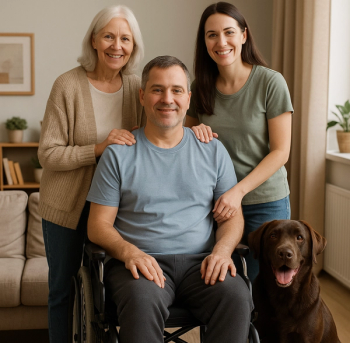
How to Don, Doff Personal Protective Equipment During COVID-19 Pandemic
Both donning and doffing are carefully laid out, but it’s the doffing part of the procedure that might present the most challenge because it involves the discarding of some of the PPE in a manner that most limits the chance of self-contamination or contaminating someone else.
Disinfect your hands. That’s the phrase heard most often in a
Many infection preventionists (IPs) and other healthcare workers who work in infection control and prevention will be familiar with the steps outlined by the investigators; steps that follow the guidelines of the US Centers for Disease Control and Prevention. But, as Infection Control Today®and many other media outlets have reported, those guidelines have had to be adjusted in light of limited supplies of PPE and the surge of COVID-19 in crowded healthcare facilities. As the curve flattens in many places and the country and healthcare looks to return to normal, the video serves as a reminder of how donning and doffing PPE should be done.
“This video demonstrates a procedure for putting on and removing one type of PPE that has been recommended by the CDC for use in U.S. hospitals to minimize the risk of exposure to infectious material during the care of patients with Covid-19,” the investigators state. The PPE used to in the video includes gloves, a gown, an N95 respirator and a full-face shield or goggles.
Both donning and doffing are carefully laid out, but it’s the doffing part of the procedure that might present the most challenge because it involves the discarding of some of the PPE in a manner that most limits the chance of self-contamination or contaminating someone else.
“Whenever possible, have an observer watch you as you take off the PPE to make sure there are no breaches in technique. Removal of PPE should begin in the patient’s room,” the tutorial advises. Also, as with donning, hand disinfecting is done often during the process.
Some of the doffing occurs in the patient’s room, and some of it outside the room. The video demonstrates a way to remove gloves in which the gloves are turned inside-out, making discarding them safely easier to do. IPs should also remove their gowns in the patient’s room, and discard them.
Outside the patient’s room, the face shield and N95 respirator need to be removed. The main objective is to avoid contaminating the eyes with mucus membranes. Remove the face shield by the straps, lifting them away from the face. Then remove the N95.
“To minimize the possibility of contamination, avoid contact with the respirator itself, touching only the straps,” the investigators say. “Tilt your head forward, grab the strap that is around your neck, and lift it over your head, allowing it to hang freely. Then bring the top strap over your head and use it to remove the respirator from your face. Discard the respirator or return it to a designated location for recycling, following the guidelines at your institution. Disinfect your hands.”
And, again, all along the way disinfect your hands, disinfect your hands, disinfect your hands.
Newsletter
Stay prepared and protected with Infection Control Today's newsletter, delivering essential updates, best practices, and expert insights for infection preventionists.






